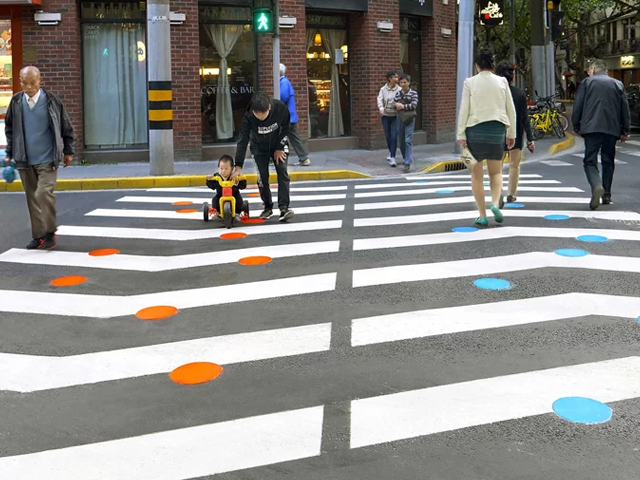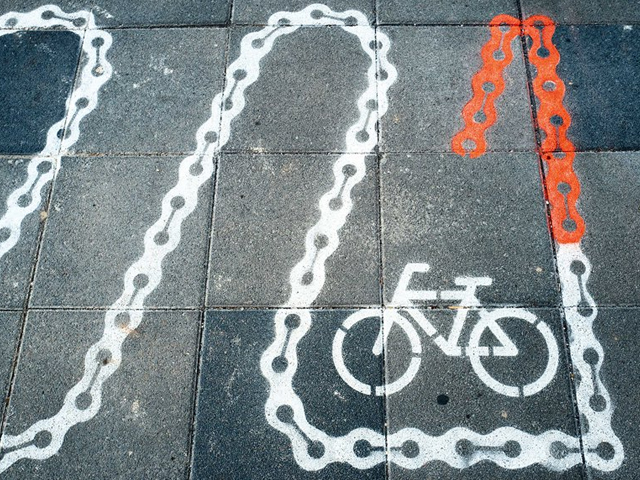EASING URBAN CONGESTION
06 Dec 2018
Simple yet effective. A public space initiative in Shanghai is seeing pedestrian and traffic issues in its urban streets resolved through a series of creative directional signage systems.

The Chain Effect is a public space intervention powered by MINI China through its urban matters platform, which curates and creates design solutions that tackle urban challenges confronting China’s creative class. The “modern urban issue” was tackled by the collaborative team of Duet Anomaly + 100architects, who set out to improve the pedestrian circulation in old neighbourhoods of the city, where sidewalks are narrow and usually congested by parked bicycles and scooters, and where pedestrian crossings are jammed with people. 
The first graphic tackled bicycle parking congestion, which occurs due to the proliferation of bicycles from the booming bike-sharing companies. This growth has created a new problem in the narrow sidewalks of the city that hinders the circulation of pedestrians. The proposal was not only intended to organise and improve the way these bikes are parked on the streets, but also to raise awareness and educate riders on civic behaviour regarding the public use of the shared bikes.
Inspired by a bicycle chain, the architects came up with a simple yet creative graphic that indicates to users individual bike parking positions, and also suggests the angle on which they should be parked; thereby optimising the accommodation of more bikes in certain areas and freeing up to 0.5m of sidewalk for a more comfortable pedestrian circulation. 
The second graphic focused on motorbike parking congestion, created by a rising proliferation of food and online shopping delivery companies. For this, another simple graphic was designed, inspired by the common sight of precariously packed delivery motorbikes found on the streets of Shanghai. The stacked boxes of the graphic form the parking slots for delivery drivers to park their motorbikes, allocating specific space and creating an organised parking system. 
The third graphic addressed the overcrowding of pedestrian crossings in narrow streets, which in peak hours are very difficult to cross without bumping into other people crossing in the opposite direction. To help organise the pedestrian circulation, the team came up with a very simple yet extremely effective modification of the traditional crossing’s parallel white lines, changing them from straight to zig-zag lines. This creates an arrow shape, giving pedestrians a directional hint. In addition, splitting the circulation in two directions creates a dedicated directional flow that helps people to avoid bumping into each other when crossing. 
These simple yet smart designs were awarded a 2018 Red Dot Design Award in the Environmental Graphics category.




